This article was medically reviewed by Luba Lee, FNP-BC, MS. Luba Lee, FNP-BC is a Board-Certified Family Nurse Practitioner (FNP) and educator in Tennessee with over a decade of clinical experience. Luba has certifications in Pediatric Advanced Life Support (PALS), Emergency Medicine, Advanced Cardiac Life Support (ACLS), Team Building, and Critical Care Nursing. She received her Master of Science in Nursing (MSN) from the University of Tennessee in 2006.
There are 7 references cited in this article, which can be found at the bottom of the page.
wikiHow marks an article as reader-approved once it receives enough positive feedback. This article received 12 testimonials and 100% of readers who voted found it helpful, earning it our reader-approved status.
This article has been viewed 259,153 times.
Tuberculosis (TB) is a disease caused by the Mycobacterium tuberculosis bacteria, which usually attacks the lungs and spreads when an infected person coughs, sneezes, or talks.[1] Tuberculosis isn't easy to catch, but you may be more likely to get it if you have a weakened immune system or are in close contact with someone who's sick.[2] While you likely don't need to worry, tuberculosis is a serious condition, so it's a good idea to try to prevent it.
Steps
How to Avoid Contracting TB
-
1Avoid exposing yourself to people with active TB. Obviously the most important precaution you can take to prevent TB is to avoid being around people with active TB, which is highly contagious, especially if you have already tested positive for latent TB.[3] More specifically:
- Don't spend long periods of time with anyone who has an active TB infection, especially if they have been receiving treatment for less than two weeks. In particular, it is important to avoid spending time with TB patients in warm, stuffy rooms.
- If you are forced to be around TB patients, for example if you work in a care facility where TB is currently being treated, you will need to take protective measures, such as wearing a face mask, to avoid breathing in the TB bacteria.
- If a friend or family member has active TB, you can help to rid them of the disease and lessen your own risk of contracting it by ensuring that they strictly follow treatment instructions.
-
2Know if you are "at-risk". Certain groups of people are considered to be more at-risk of developing TB than others. If you are a member of ones of these groups, you need to be more vigilant about protecting yourself from TB exposure. Some of the main at-risk groups are as follows:[4]
- People with weakened immune system, such as those with HIV or AIDs.
- People who live with or care for someone with active TB, such as a close relative or a doctor/nurse.
- Healthcare and social workers who serve high-risk patients, such as people who are homeless.
- People born where TB is common, including children, and anyone who has immigrated within the last five years from areas that have a high TB rate.
- People who live in crowded, confined spaces such as prisons, nursing homes, or homeless shelters.
- People who abuse drugs and alcohol, or have little or no access to proper health care.
- People who live in or travel to countries where active TB is common, such as countries in Latin America, Africa and parts of Asia.[5]
Advertisement -
3Lead a healthy lifestyle. People who are in poor health are more susceptible to the bacteria, as their disease resistance is lower than in healthy people. Therefore, it is important to do your best to lead a healthy lifestyle.[6]
- Eat a healthy, balanced diet with plenty of fruit, vegetables, whole grains and lean meat. Avoid fatty, sugary and processed foods.
- Exercise often, at least three to four times a week. Try to incorporate some good cardiovascular exercise into your workouts, such as running, swimming or rowing.
- Cut down on alcohol consumption and avoid smoking or taking drugs.
- Get plenty of good quality sleep, ideally between seven and eight hours a night.
- Maintain good personal hygiene and try to spend as much time as possible outdoors, in the fresh air.
-
4Get the BCG vaccination to prevent TB. The BCG (Bacille Calmette-Guerin) vaccine is used in many countries to help prevent the spread of TB, especially among small children. However, the vaccine is not commonly used in the US, where infection rates are low and the disease is highly treatable. Therefore, the CDC does not recommend the vaccine as a routine immunization.[7] In fact, the CDC only recommends the BCG vaccine for U.S. citizens in the following situations:[8]
- When a child has been tested negative for TB but will continue to be exposed to the disease, especially strains that are resistant to treatment.
- When a healthcare worker is continually exposed to tuberculosis, especially strains that are resistant to treatment.
- Before travelling to another country where tuberculosis is prevalent.
How to Diagnose and Treat TB
-
1Schedule a TB test if you have been exposed to someone with tuberculosis. If you have recently been exposed to someone with active TB and believe there is a chance you might have contracted the disease, it is important to consult your health care provider immediately. There are two methods for TB testing:
- Skin test: The Tuberculin Skin Test (TST) requires injecting a protein solution sometime between 8 and 10 weeks after contact with an infected person. The patient must return to the medical provider two or three days later to have the skin reaction interpreted.
- Blood test: Although it's not as commonplace as the skin test, the TB blood test only requires a single doctor visit and is less likely to result in misinterpretation by a medical professional. It is the necessary option for anyone who has received the BCG vaccination, as the vaccine can interfere with the accuracy of the tuberculin skin test.
- If your TB test is positive, you will need to undergo additional testing. Health professionals will need to determine whether you have a latent TB (which is not contagious) or active TB disease before proceeding with treatment. Tests may include a chest x-ray and a sputum test.[9]
-
2Begin immediate treatment for latent TB. If you test positive for latent TB, you should consult with your doctor about the best course of action.
- Although you don't feel sick with a latent TB, and it isn't contagious, you will probably be prescribed a course of antibiotics to kill the inactive TB germs and prevent tuberculosis from turning into an active disease.
- The two most common treatments are: Taking isoniazid daily or twice a week. The duration of the treatment is six or nine months. Or, for those who can’t tolerate isoniazid, taking rifampin daily for four months.
-
3Begin immediate treatment for active TB. If you test positive for active TB, it is essential that you begin treatment as soon as possible.
- Symptoms of active TB include cough, sputum production, fever, weight loss, fatigue, night sweats, chills and a loss of appetite.
- Nowadays, active TB is highly treatable with a combination of antibiotic medications, however the duration of treatment can be quite long, usually between six to twelve months.
- The most common medications to treat TB include isoniazid, rifampin (Rifadin, Rimactane), ethambutol (Myambutol) and pyrazinamide. With active TB, you will usually need to take a combination of these drugs, especially if you have a particularly drug-resistant strain.
- Patients with resistance to both isoniazid and rifampin should be monitored for two years after treatment.
- If you follow your treatment plan exactly, you should start to feel better within a matter of weeks and you should no longer be contagious. However, it is essential that you finish your course of treatment, otherwise the TB will remain in your system and potentially become more drug resistant.[10]
How to Avoid Spreading TB
-
1Stay at home. If you have active TB, you will need to take precautionary steps to avoid passing the disease onto others. You will need to stay at home from work or school for several weeks following diagnoses and avoid sleeping or spending long periods of time in a room with other people.
- You should also refrain from having visitors in the home until you are no longer infectious.
-
2Ventilate the room. Mycobacterium tuberculosis spreads more easily in enclosed spaces with stagnant air. Therefore, you should open any windows or doors to let fresh air in and contaminated air out.
- For this reason, you should also sleep alone rather than in the same room as other members of the household.
-
3Cover your mouth. Just like when you have a cold, you will need to cover your mouth whenever you cough, sneeze or even laugh. You can use your hand if necessary, but using a tissue is preferable.
-
4Wear a mask. If you are forced to be around people, it's a good idea to wear a surgical mask that covers your mouth and nose, at least during the first three weeks following infection. This helps to lessen the risk of you passing the bacteria to someone else.
-
5Finish your course of medication. It is absolutely essential that you finish whatever course of medication your doctor prescribes. Failing to do so gives the TB bacteria a chance to mutate, making the bacteria much more resistant to medications, and therefore more deadly. Finishing your course of medications is the safest option not only for you, but for those around you.[11]
Expert Q&A
-
QuestionIs it possible that you have TB if you still have a wet cough more than 3 years after treatment?
 Luba Lee, FNP-BC, MSLuba Lee, FNP-BC is a Board-Certified Family Nurse Practitioner (FNP) and educator in Tennessee with over a decade of clinical experience. Luba has certifications in Pediatric Advanced Life Support (PALS), Emergency Medicine, Advanced Cardiac Life Support (ACLS), Team Building, and Critical Care Nursing. She received her Master of Science in Nursing (MSN) from the University of Tennessee in 2006.
Luba Lee, FNP-BC, MSLuba Lee, FNP-BC is a Board-Certified Family Nurse Practitioner (FNP) and educator in Tennessee with over a decade of clinical experience. Luba has certifications in Pediatric Advanced Life Support (PALS), Emergency Medicine, Advanced Cardiac Life Support (ACLS), Team Building, and Critical Care Nursing. She received her Master of Science in Nursing (MSN) from the University of Tennessee in 2006.
Board-Certified Family Nurse Practitioner Yes, it is possible especially if your TB treatment wasn't adequate. The best thing to do in your case is to follow up with a doctor and get a full evaluation of your symptoms.
Yes, it is possible especially if your TB treatment wasn't adequate. The best thing to do in your case is to follow up with a doctor and get a full evaluation of your symptoms. -
QuestionWhat's the best thing to do to prevent TB?
 Luba Lee, FNP-BC, MSLuba Lee, FNP-BC is a Board-Certified Family Nurse Practitioner (FNP) and educator in Tennessee with over a decade of clinical experience. Luba has certifications in Pediatric Advanced Life Support (PALS), Emergency Medicine, Advanced Cardiac Life Support (ACLS), Team Building, and Critical Care Nursing. She received her Master of Science in Nursing (MSN) from the University of Tennessee in 2006.
Luba Lee, FNP-BC, MSLuba Lee, FNP-BC is a Board-Certified Family Nurse Practitioner (FNP) and educator in Tennessee with over a decade of clinical experience. Luba has certifications in Pediatric Advanced Life Support (PALS), Emergency Medicine, Advanced Cardiac Life Support (ACLS), Team Building, and Critical Care Nursing. She received her Master of Science in Nursing (MSN) from the University of Tennessee in 2006.
Board-Certified Family Nurse Practitioner Avoid crowded areas and people who are infected with TB, practice good hygiene such as hand washing, avoid exposure to those who cough and sneeze, and maintain a healthy immune system. These are basics to keep yourself well.
Avoid crowded areas and people who are infected with TB, practice good hygiene such as hand washing, avoid exposure to those who cough and sneeze, and maintain a healthy immune system. These are basics to keep yourself well.
Warnings
- Individuals who have received an organ transplant, have an HIV infection or are considered to be at risk for complications for other reasons can't receive treatment for a LTBI.⧼thumbs_response⧽
- The BCG vaccination should not be given to someone who is pregnant, immunosuppressed or likely to become immunosuppressed. There have not been sufficient studies to determine the safety of the BCG vaccination on a developing fetus.⧼thumbs_response⧽
- Always remember that prevention is better than cure.⧼thumbs_response⧽
References
- ↑ https://medlineplus.gov/tuberculosis.html
- ↑ https://www.cdc.gov/tb/topic/basics/risk.htm
- ↑ https://www.nhs.uk/conditions/tuberculosis-tb/
- ↑ https://www.cdc.gov/tb/topic/basics/risk.htm
- ↑ https://www.nhs.uk/conditions/tuberculosis-tb/
- ↑ https://www.tbalert.org/about-tb/what-is-tb/prevention/
- ↑ https://www.tbalert.org/about-tb/what-is-tb/prevention/
- ↑ https://www.cdc.gov/tb/topic/basics/vaccines.htm
- ↑ https://www.cdc.gov/tb/publications/faqs/pdfs/qa.pdf
About This Article
The simplest way to prevent tuberculosis is to avoid being around people who have TB, especially in warm, stuffy rooms. If you work in a care facility where TB is being treated, or are forced to be around TB patients for another reason, wear a face mask to avoid breathing in TB bacteria. Some people are more at risk of getting TB than others, so you should be especially careful if you have a weakened immune system, use drugs or alcohol regularly, or live in a confined space like a nursing home or homeless shelter. There is a vaccine for TB, but it’s not common in the United States since infection rates are low. You should only get it if you are traveling to a country where TB is more common. For more help from our Medical co-author, like how to treat tuberculosis, read on.




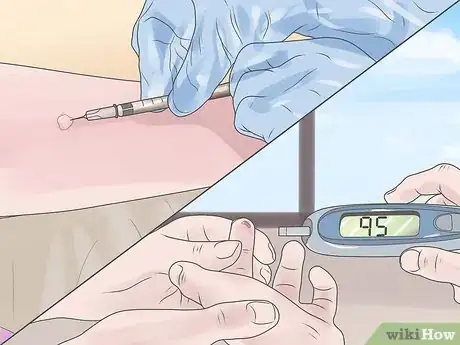




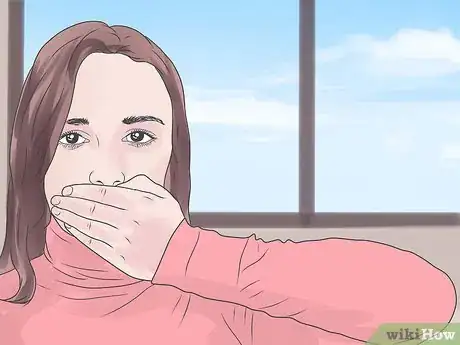
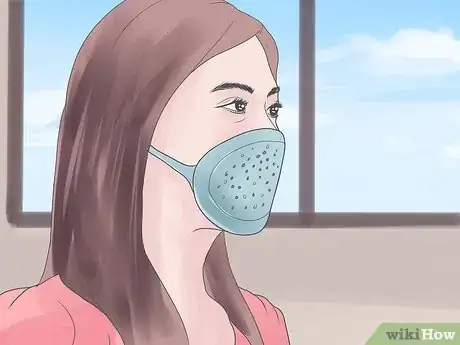
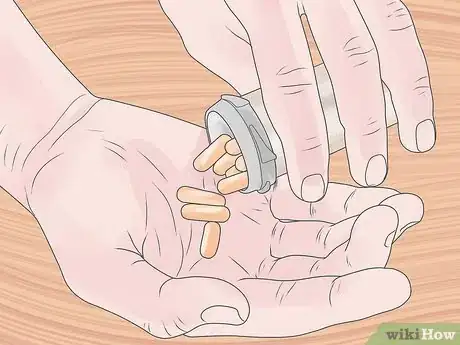
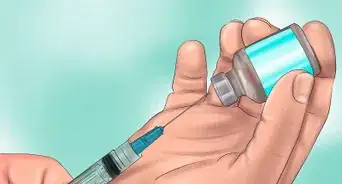

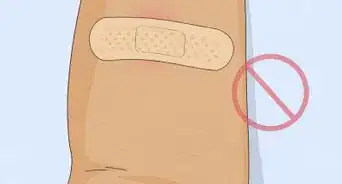


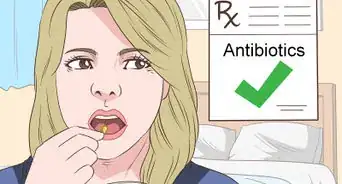
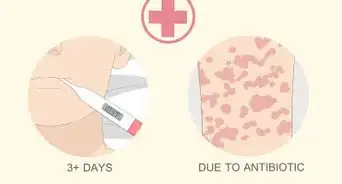






-Step-11.webp)










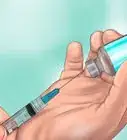

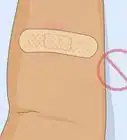
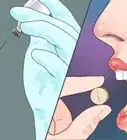




































Medical Disclaimer
The content of this article is not intended to be a substitute for professional medical advice, examination, diagnosis, or treatment. You should always contact your doctor or other qualified healthcare professional before starting, changing, or stopping any kind of health treatment.
Read More...